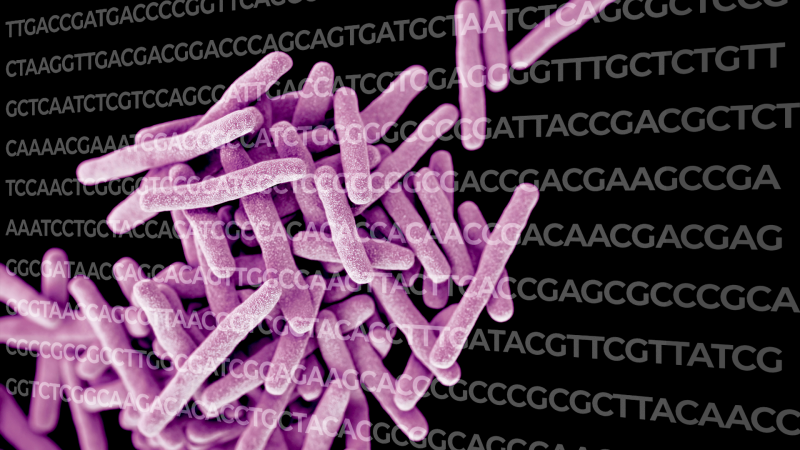
A river meanders lazily through the plains but, in rocky terrain, might tumble rapidly down as a waterfall, sometimes in multiple cascades. Charles Darwin had earlier proposed that changes in the characteristics of organisms happen very slowly over time and generations, just like the river’s gentle flow. However, recent research by Dr Saurabh Mahajan and Dr Deepa Agashe from the National Center for Biological Sciences, Bengaluru, reports that at least one trait, the composition of nucleotides in bacterial genomes, may take a tumble due to a rapid change. Nucleotides are the basic units that make DNA and RNA. Changes in the composition of nucleotides are usually gradual. Yet, in at least some bacterial lineages, drastic changes have been observed.
Working with genome sequences collected across bacterial species, the researchers show that the percentage of G and C nucleotides (referred to as GC content) changes quite rapidly. They also find that such rapid changes are not specifically associated with adaptation to a specific habitat or a lifestyle, and the reason behind the large jumps in GC content remains a mystery.
The genes in bacteria and every other organism are made up of four chemical molecules called nucleotides, denoted by the symbols A, T, G and C. The nucleotides are found as pairs of twos and are called base pairs. ‘A’ pairs with ‘T’ while a ‘G’ pairs with ‘C’. The GC content in any genome is the number of GC base pairs divided by the number of total base pairs in the genome.
The specific arrangement or sequence of these nucleotides stores the information required to express a particular protein. For example, the sequence of the nucleotides coding for Hemoglobin will differ from that of Insulin. The protein is also altered if there is a sudden change or a mistake in the nucleotide sequence. For instance, when the chemical molecule A is mistakenly changed to T in a specific position in the Hemoglobin gene, it causes Sickle Cell Anemia.
The nucleotide sequence is different not only between the genes of organisms of the same species but also between species. Thus, the percentage composition of the nucleotide sequence of any two species will differ. The nucleotide composition measured as the percentage of GC base pair nucleotides varies between 25 to 75 % across different species of bacteria.
The researchers used a published comprehensive phylogenetic tree of bacteria and focused on two major phyla and ten orders. A phylogenetic tree represents the evolutionary relationships between organisms, shown as branches in a tree. Using bioinformatics tools, the researchers then mapped how the genomic GC content as a trait changes across lineages in the tree.
The analysis compared three models of trait evolution, which differ in their assumptions about how a particular trait evolves. One of the models assumes that the trait evolves randomly without any direction, just like the random movements of a dust particle. The second model assumes a random movement that eventually reaches a specific goal, like the walk of a drunkard trying to find his home. The third model predicts that a trait occasionally evolves in abrupt jumps in a specific direction against a background of constant random change.
The current research found that the observed patterns of evolution of GC content best resemble the predictions of the third model, suggesting that the assumptions of this model better represented the truth compared to the other two models.
“We knew there was a lot of diversity in GC content across bacteria. But whether it evolves slowly or rapidly was not clear,” says Dr Mahajan. The sudden changes were happening in both directions - an increase or a decrease in the GC content.
Earlier reports suggested that the variation in the percentage of GC content accumulates gradually during the course of evolution. There have also been many attempts to explain why different bacteria happen to contain such different GC percentages. Some previous groups had linked the GC content of some bacteria with adaptation to specific habitats like marine ecosystems. Other studies have linked it to particular lifestyles, like living inside the bodies of other hosts with mutual benefits.
The team analysed the GC jumps to see whether they happen in specific lineages that show these ecological changes. “We found something known before- bacteria that permanently depend on hosts rapidly change to a lower GC content,” observes Dr Mahajan. They further tested whether any changes also accompanied lineages that evolved to predominantly live in a particular habitat like a marine habitat. “We checked for other aspects of habitat and oxygen use but did not find any other particular association with the lifestyle of bacteria,” says Dr Mahajan. Unlike previous findings, the current study suggests that GC content jumps were not unique in lineages that live inside other beings or in marine habitats. Instead, lineages with large GC jumps occupied a variety of ecological contexts.
A jump that increased the GC content—called an upward jump—was smaller in magnitude than a downward jump. Also, upward jumps were more common in species with a low initial GC content, and downward jumps were more common in species with a high initial GC content.. This may explain why the GC content across bacteria is always between 25 % to 75%. Going beyond these thresholds becomes increasingly more difficult as you approach the thresholds.
One explanation for rapid changes in the GC content can be an evolutionary change in the inherent mutational bias (i.e. the tendency for some types of mutations to occur more frequently than others). Previous studies have associated the loss of DNA copying and repair enzymes with altered mutational biases. But how such mutational biases contribute to changes in GC content has yet to be investigated in detail. Earlier hypotheses suggest that the change in GC content could reflect selection imposed by environmental factors like temperature, oxygen requirement, and nitrogen availability. But Dr Mahajan could not find any convincing evidence for these in the phylogenetic tree analysis.
Though the GC content is changing in the form of large evolutionary jumps, it is yet to be established why it is happening the way it is and in what context. There could be some as yet unidentified ecological or environmental reasons. Dr Mahajan comments on this interesting find, “I do think curiosity is a big part of being human. Wouldn’t you be curious if you learnt that a particular community of Kannada speakers has shifted to using only particular letters of the language? It is the same for these bacteria. DNA is a common language, but some species are changing to use only some letters of DNA.”
This article has been run past the researchers, whose work is covered, to ensure accuracy.






